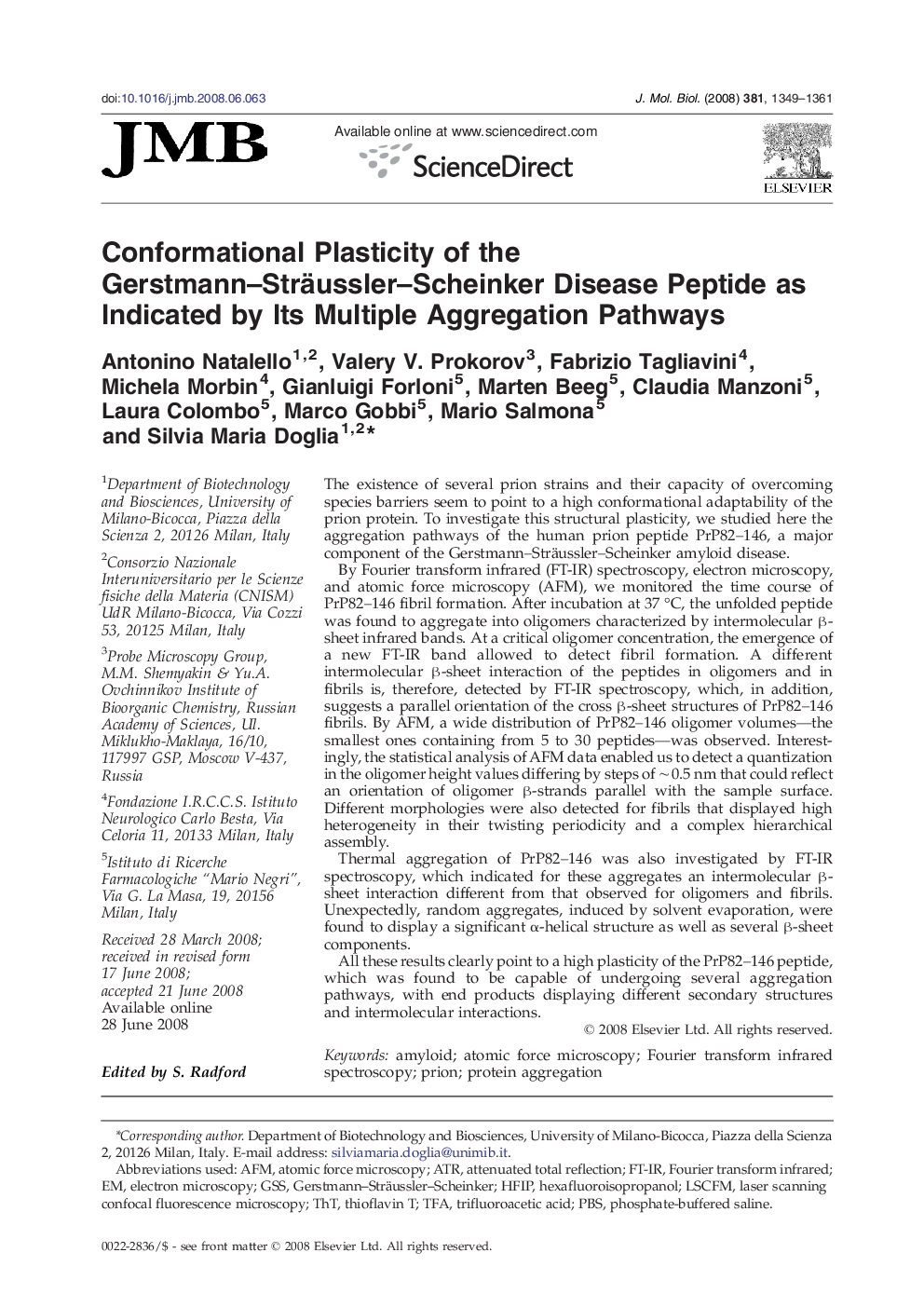| کد مقاله | کد نشریه | سال انتشار | مقاله انگلیسی | نسخه تمام متن |
|---|---|---|---|---|
| 2187299 | 1096108 | 2008 | 13 صفحه PDF | دانلود رایگان |

The existence of several prion strains and their capacity of overcoming species barriers seem to point to a high conformational adaptability of the prion protein. To investigate this structural plasticity, we studied here the aggregation pathways of the human prion peptide PrP82–146, a major component of the Gerstmann–Sträussler–Scheinker amyloid disease.By Fourier transform infrared (FT-IR) spectroscopy, electron microscopy, and atomic force microscopy (AFM), we monitored the time course of PrP82–146 fibril formation. After incubation at 37 °C, the unfolded peptide was found to aggregate into oligomers characterized by intermolecular β-sheet infrared bands. At a critical oligomer concentration, the emergence of a new FT-IR band allowed to detect fibril formation. A different intermolecular β-sheet interaction of the peptides in oligomers and in fibrils is, therefore, detected by FT-IR spectroscopy, which, in addition, suggests a parallel orientation of the cross β-sheet structures of PrP82–146 fibrils. By AFM, a wide distribution of PrP82–146 oligomer volumes—the smallest ones containing from 5 to 30 peptides—was observed. Interestingly, the statistical analysis of AFM data enabled us to detect a quantization in the oligomer height values differing by steps of ∼ 0.5 nm that could reflect an orientation of oligomer β-strands parallel with the sample surface. Different morphologies were also detected for fibrils that displayed high heterogeneity in their twisting periodicity and a complex hierarchical assembly.Thermal aggregation of PrP82–146 was also investigated by FT-IR spectroscopy, which indicated for these aggregates an intermolecular β-sheet interaction different from that observed for oligomers and fibrils. Unexpectedly, random aggregates, induced by solvent evaporation, were found to display a significant α-helical structure as well as several β-sheet components.All these results clearly point to a high plasticity of the PrP82–146 peptide, which was found to be capable of undergoing several aggregation pathways, with end products displaying different secondary structures and intermolecular interactions.
Journal: Journal of Molecular Biology - Volume 381, Issue 5, 19 September 2008, Pages 1349–1361